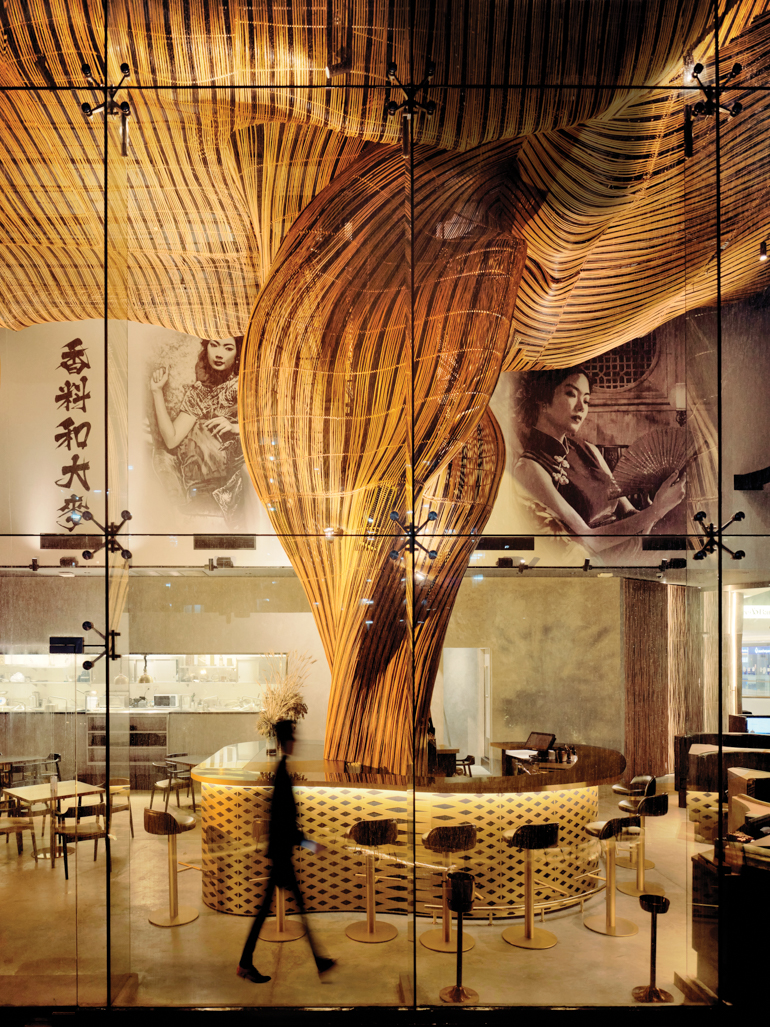A New Post-Pandemic Restaurant Archetype Emerges
A new post-pandemic restaurant archetype emerges around the globe, from Turin to Bangkok.
5 Post-Pandemic Restaurant Designs Around the Globe
The Third Place, St. Petersburg, Russia by DA Bureau

The courtyard of an abandoned 1843 mansion—used as a railway museum in the pre-Revolution Soviet era and currently being restored and remodeled by this firm—has been transformed into a festive pop-up space for food and art festivals with beachy larch elements, bivalve allusions, and a reflective aluminum-foil curtain on the facade.
Oceanica, Makhachkala, Russia by Studio Shoo

For this seafood restaurant, the 5-year-old Moscow firm specializing in hospitality dove into marine-inspired elements, employing nautical rope as partitions, wavy coral-colored polycarbonate by windows, and droplet-shape pendant discs, all surrounded by local artist Roman Lozovoy’s aquatic murals and a sea of tinted concrete flooring.
Samna, Kiev, Ukraine by YOD Design

With a 19th-century materials palette—oak, leather, copper, steel, brick, plaster—and interiors bathed in a rich, warm glow, the project’s details nod to the exiled Turkish statesman (and possible inspirer of The Count of Monte Cristo) who once lived in the 1797 house that the three-level Middle Eastern eatery now partly occupies.
Bun Burger, Turin, Italy by Masquespacio

Memphis forms meet millennial colors and fonts at this swimming pool–inspired outpost of a Milan-based chain, its arches, ceramic tile, changes in floor level, and monochromatic palettes helping to create three distinct environments corresponding to three storefront windows.
Spice & Barley Restaurant, Bangkok by Enter Projects

Evoking amber lager being poured into a tall glass, the striking golden columns that billow up to the 98-foot-high ceiling in this craft-beer lounge are the result of fusing 3D technology with traditional Thai methods of weaving natural rattan, a sustainable material ideal for creating such free-flowing geometries.


